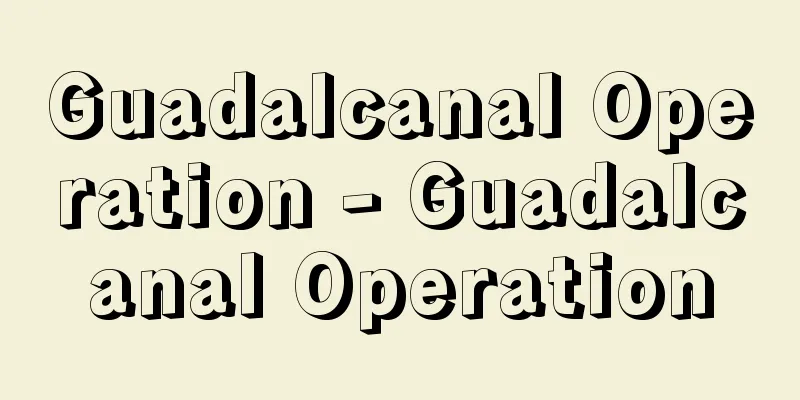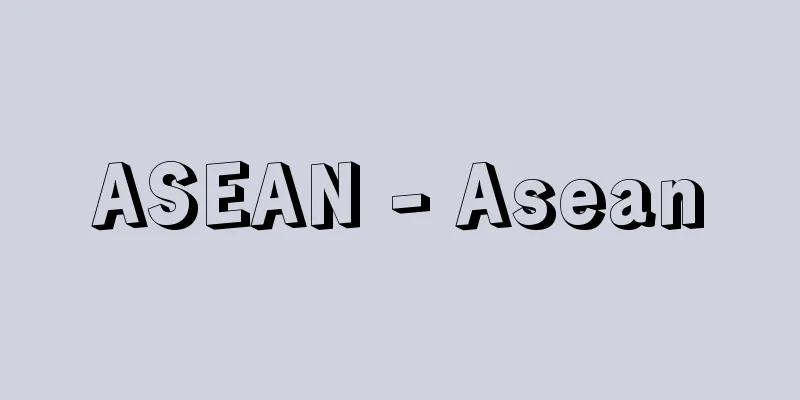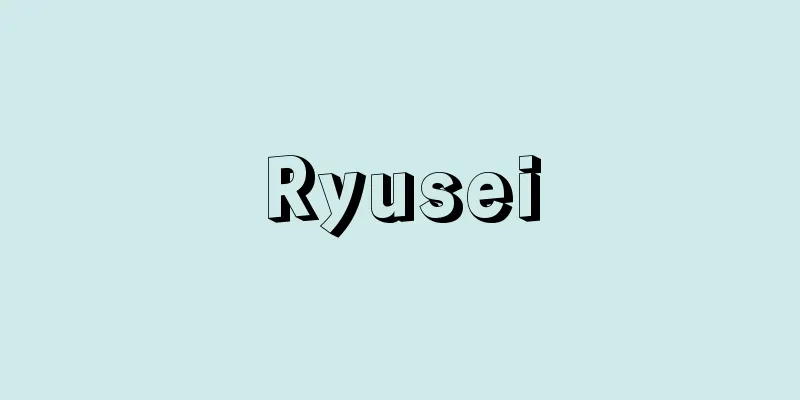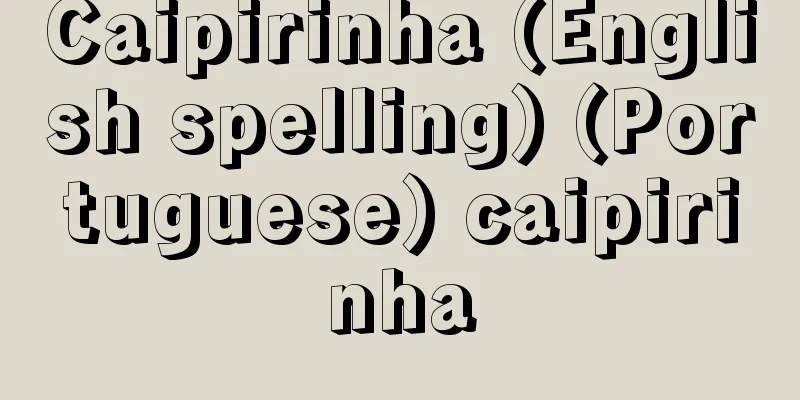Injection - Chusha (English spelling) injection
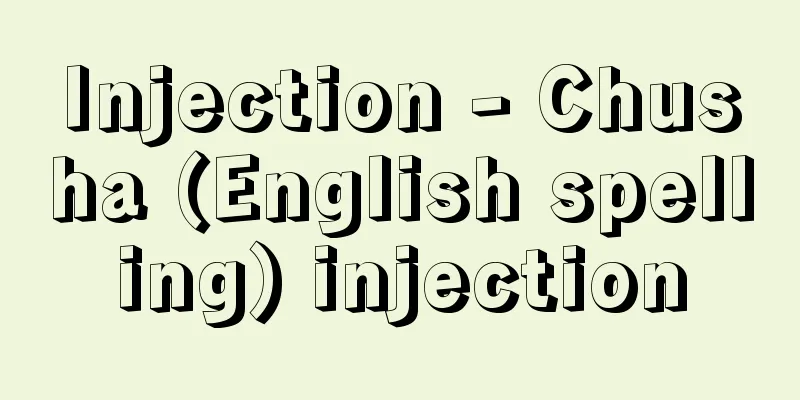
|
This is a method of drug administration in which a liquid drug is directly injected into the body using a syringe. Compared to oral administration, this has the advantage of being more quickly and reliably absorbed and has a rapid effect, but depending on the injection site and the drug, it can cause quadriceps shortening or shock, so in principle oral administration is used, and injections are only used in the following cases: (1) when oral administration is not possible due to unconsciousness or severe nausea or vomiting (however, drugs may be injected into the stomach using a feeding tube, or enemas or suppositories may be used), (2) when large amounts of drugs must be administered urgently, such as for chemotherapy for severe infections, blood transfusions, or fluid infusions, (3) when reliable absorption of drugs is expected for severe symptoms, (4) when drugs that are only available in injectable form, such as streptomycin, are used, and (5) when oral administration irritates the digestive mucosa or is difficult to absorb. [Noriaki Yanagishita] kindsDepending on the injection site, injections are divided into intravenous injections, arterial injections, intramuscular injections, subcutaneous injections, intradermal injections, etc. (1) Intravenous injection: A needle is inserted into a vein to inject a drug directly into the bloodstream, and the drug reaches the necessary tissue via the heart within 1 to 2 minutes. There are two types of intravenous injection: a relatively small amount (10 to 50 milliliters) of drug is injected, and a large amount (500 to 1,000 milliliters) is injected by intravenous drip infusion (intravenous drip injection). Intravenous drip injection is used as a means of injecting fluids and blood transfusions. Intravenous injections are usually used when a rapid effect of a drug is required or when a drug cannot be administered otherwise; the most common injection site is the cubital vein, but it can also be given into the veins of the forearm or leg. (2) Arterial injection: This is a method of injecting a large amount of medicine into the artery that flows into the affected area. Although it is possible to distribute the medicine throughout the body with an intravenous injection, it is not possible to deliver a high concentration of the medicine locally. In practice, this is limited to special cases, such as administering an anticancer drug to a specific organ. (3) Intramuscular injection: A small amount (1-10 milliliters) of medication is injected into the muscle. It is used for medications that cause strong irritation or pain, oily medications, or medications that are poorly absorbed, and also for cases where the rapid effect of an intravenous injection is not expected. Injections are given in areas with thick muscle layers and few large blood vessels or nerves, such as the outer gluteus maximus muscle in the buttocks, avoiding the sciatic nerve, the deltoid or triceps muscle in the upper arm, or sometimes the quadriceps muscle. However, in children, whose muscles are not yet fully developed and who are prone to muscle contracture and atrophy, excessive use of the device on the same area should be avoided. (4) Subcutaneous injection: This is a method of injecting a small amount of medication (0.1 to 5 milliliters) into the subcutaneous tissue. It is absorbed slower than intramuscular injections, but is considered safer. However, in the case of medications that are highly irritating to the local area, intramuscular injections are less painful. In addition to insulin, which changes when taken orally, certain types of hemostatic agents and vitamins are also used in emergencies, as are painkillers and cardiac stimulants, which are absorbed faster than oral administration. The most commonly used injection site is the outer part of the upper arm, where the subcutaneous tissue is well developed and there is a low distribution of nerves and blood vessels, but it can also be given on the front or outer side of the thigh. (5) Intradermal injection: This method involves injecting a very small amount (0.05 to 0.1 milliliters) of medication between the epidermis and dermis when you want it to be absorbed slowly. The advantage of this method is that the reaction to the injected solution can be confirmed with the naked eye. For this reason, it is used for tuberculin reactions, diagnostic reactions to allergy antigens, and vaccinations for various vaccines. The most common injection site is the skin on the inside of the forearm, but it can also be given on the outside of the upper arm. After injection, you should not rub or massage the area. [Noriaki Yanagishita] SyringeIt consists of a container and a needle, and the container is divided into a syringe barrel that holds the liquid medicine and a piston that pushes the liquid into the syringe. There are various types of syringe barrels depending on the capacity, ranging from thick and large ones to thin ones for minute amounts. Needles also come in different lengths, and have a hollow, thin wire (mandolin) inside. They are pulled out before injection. The tip is also cut at an angle, and while subcutaneous injections are sharp, intravenous injections are blunter. Traditionally, the container was made of hard glass and the needle was made of chrome steel, and after use, it was boiled to sterilize it, dried, and reused, and if the needle tip became blunt, it was polished, but in recent years, since it was discovered that serum hepatitis can be transmitted through injections, disposable plastic ones have come to be used exclusively. Also, high-pressure syringes that do not use needles but use compressed air to inject the drug solution directly into tissues are used for subcutaneous injections in mass vaccinations. [Noriaki Yanagishita] [Reference] |Source: Shogakukan Encyclopedia Nipponica About Encyclopedia Nipponica Information | Legend |
|
薬物投与法の一つで、注射器syringeを用いて薬液を体内に直接注入する方法をいう。経口投与に比べると薬剤の吸収が速くて確実であり、効果が迅速であるという利点もあるが、注射部位や薬剤によっては大腿(だいたい)四頭筋短縮症やショックなどをおこすため、原則としては経口投与が行われ、注射は次のような場合に限って用いられる。すなわち、〔1〕意識がなかったり、悪心(おしん)や嘔吐(おうと)が強くて経口投与ができない場合(ただし、経管法で胃内に注入したり、注腸や坐薬(ざやく)を用いることもある)、〔2〕重症感染症に対する化学療法をはじめ、輸血や輸液など、緊急に大量の薬剤を投与する必要がある場合、〔3〕重篤な症状で、薬剤の確実な吸収を期待する場合、〔4〕ストレプトマイシンなど注射剤しか剤形のない薬剤を使用する場合、〔5〕経口投与では消化器粘膜を刺激したり、吸収されにくい場合、などである。 [柳下徳雄] 種類注射部位により、静脈注射、動脈注射、筋肉注射、皮下注射、皮内注射などに分ける。 (1)静脈注射 静脈内に注射針を刺入して薬剤を直接血管内に注入する方法で、薬剤は1~2分のうちに心臓を経て必要な組織に達する。これには比較的少量(10~50ミリリットル)の薬剤を注入する通常の静脈注射と、大量(500~1000ミリリットル)の薬剤を注入する点滴静注法(点滴注射)がある。点滴注射は輸液や輸血の注入手段として用いられる。 通常の静脈注射は、薬物の迅速な効果を必要とする場合、または静脈注射以外には使用できない薬剤を用いるときに行われ、注射部位としては一般に肘(ちゅう)静脈が多用されるが、前腕や下肢の静脈に行うこともある。 (2)動脈注射 患部局所に流入する動脈内に大量の薬剤を注入する方法である。静脈注射では薬剤を全身に行き渡らせることはできても、局所に高濃度に作用させるわけにはいかないために行われるが、実際にはある臓器を目標に制癌(せいがん)剤を投与するといった特殊な場合に限られる。 (3)筋肉注射 少量(1~10ミリリットル)の薬剤を筋肉内に注入する方法で、刺激や疼痛(とうつう)の強いものや油性の薬剤など、あるいは吸収の悪いものに適用されるほか、静脈注射をするほど迅速な効果を期待しない場合などにも使われる。注射部位としては、筋層が厚くて大きな血管や神経の分布が少ない場所、たとえば臀(でん)部の外臀筋で坐骨神経を避けた部位、上腕部の三角筋や三頭筋、ときには大腿四頭筋に行うこともある。 しかし、小児では筋の発達が十分でなく、筋の拘縮や萎縮(いしゅく)をおこしやすいため、同一部位での多用は避けるべきである。 (4)皮下注射 皮下組織内に少量の薬剤(0.1~5ミリリットル)を注入する方法で、筋肉注射に比べ吸収は遅いが、より安全とされる。しかし、局所の刺激が強い薬剤の場合は、筋肉注射のほうが疼痛は少ない。内服では変化してしまうインスリンのほか、ある種の止血剤やビタミン剤、さらには内服よりも吸収が速いため鎮痛薬や強心薬なども緊急時にはこの方法で行われる。注射部位としては皮下組織が発達し、神経や血管の分布が少ない上腕外側部が多用されるが、大腿の前面や外側に行うこともある。 (5)皮内注射 ごく少量(0.05~0.1ミリリットル)の薬剤をゆっくり吸収させたい場合に表皮と真皮の間に注射する方法で、注射液による反応が目で確かめられることが利点である。このため、ツベルクリン反応、アレルギーの抗原の診断反応、各種ワクチンの予防接種などに用いられる。注射部位としては前腕内側の皮膚がもっとも多く、上腕の外側にも行われる。注射後は、こすったりもんだりしてはいけない。 [柳下徳雄] 注射器容器と注射針からなり、容器は薬液を入れる注射筒と薬液を押し込むピストンに分けられる。容量によって各種の注射筒があり、太くて大きいものから微量用の細いものまである。注射針にも長短があり、中空で細い針金(マンドリン)が入れてある。注射時には引き抜いて使用する。また、先が斜めにカットされており、皮下注射用は鋭くとがっているが、静脈注射用はそれより鈍である。 なお、材質は従来、容器が硬質ガラスで注射針はクロム鋼製であり、使用後は煮沸滅菌、乾燥のうえ繰り返し使用され、針先が鈍磨すれば研磨したが、近年、血清肝炎が注射を通じて感染することが知られてからは、もっぱらプラスチック製の使い捨て(ディスポーザブル)のものが用いられるようになった。また、注射針を使わず圧縮空気の圧力で直接組織内に薬液を注入する高圧注射器が皮下注射用として集団予防接種に活用されている。 [柳下徳雄] [参照項目] |出典 小学館 日本大百科全書(ニッポニカ)日本大百科全書(ニッポニカ)について 情報 | 凡例 |
<<: Glossatoren (German: Glossatoren)
>>: Silk thread spinning - Chushiboseki
Recommend
Abovyan, K.
...In the 20th century, Martiros S. Sar'yan (...
History of Goryeo (English: Koryō-sa)
A historical record of the Goryeo Dynasty of Korea...
Arowana - Arowana (English spelling)
A large freshwater fish belonging to the family O...
Painted Bizen - Ebizen
... In the early Edo period, thin handmade ware, ...
Solidaridad Catalana (English spelling) Solidaridad Catalana
…Like Canovas, Maura aimed for a “revolution from...
Roffet, E. (English spelling) RoffetE
A bookbinding is a type of bookbinding that is us...
Gheorghe Gheorghiu‐Dej
1901‐65 Romanian politician. He was a worker and j...
F1 Racing Car - F1 Racing Car
…There are the following types of races according...
Confession - Confession
In the Roman Catholic Church, believers confess th...
Occasional rain - kyuujiu
…He is the leader of the 108 heroes of Liangshan ...
Colorimeter - Hishokukei (English spelling) colorimeter
The analytical method of quantifying a substance ...
Mercury (space program)
...In other words, the acceleration that humans e...
Polybasite
Also called miscellaneous silver ore. (Ag, Cu) 16 ...
Criollos
...Until the end of the 18th century, Cuba remain...
Noshi - Gift wrapping
Abbreviation of Noshi Awabi. Abalone meat is peel...
